There are many cool ideas to decorate your dream living room, and one of the styles you can adopt is the transitional living room. Maybe this style will be the most favourite style to make your living room become more elegant, yet still, present the cool impression for everyone who’s coming to your living room.
Basically, the living room is supposed to be the most mesmerizing and comfortable room. it is because you’ll accept many guests, and they will definitely see and ‘observe’ your living room. so, maybe to create that kind of atmosphere, you can try to apply this transitional living room ideas and let the people amaze with it.
How Are Actually Transitional’s Living Room Ideas?
The transitional style of a living room is actually a style which combined between two kinds of design, which are the traditional look and the contemporary look. It definitely blended so well, by combining the traditional style on how you choose the decoration for the interior style, and also the contemporary colour which shows a modern touch.
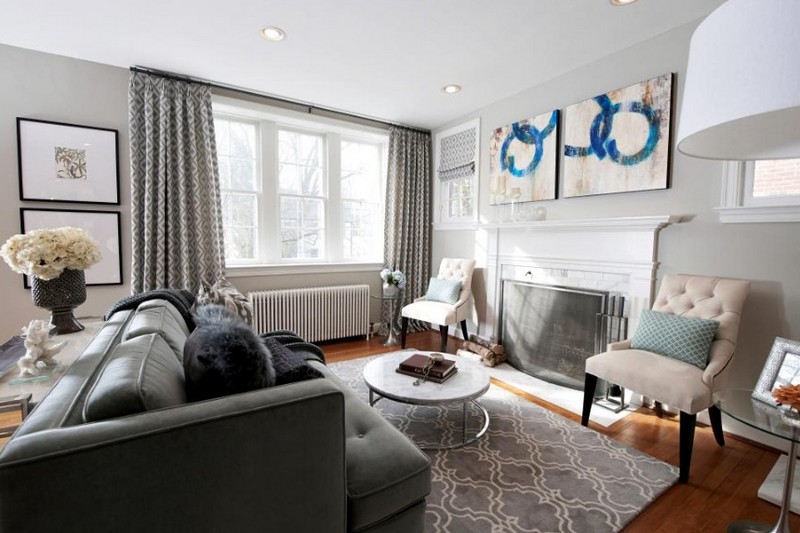
In other word, transitional living room ideas combined old and new style to make such kind of harmony in the room. Both of the styles are going to become together flawlessly. You could really explore it to make everything balance from the interior, furniture, the wall, or anything in your living room.
In this style of living room, it’s common that simplicity is the most important thing. It doesn’t need too much glamour furniture or luxurious interior at all. So, make sure that you really concern on how you choose the thing for your living room. It usually had less bold in everything inside.
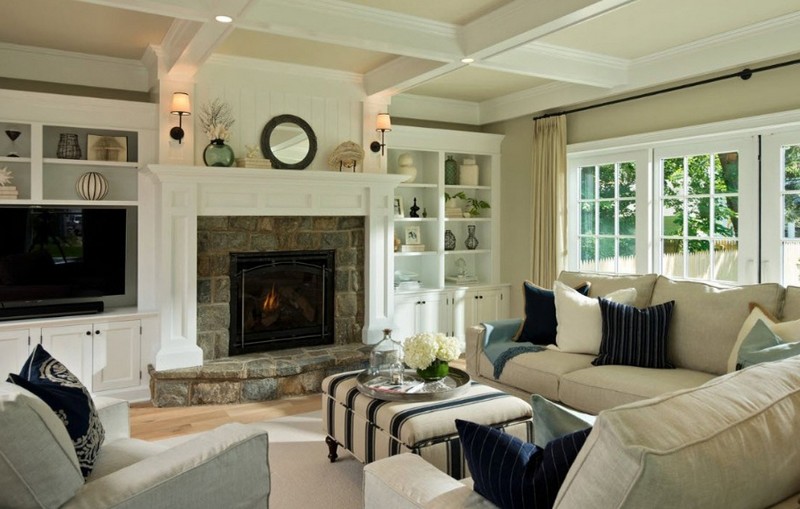
The Best Furniture for Transitional Living Room
As it mentioned before that, transitional style doesn’t need something too glamorous or luxurious. It has to be really simple, calm, yet comforting everyone there. To make the transitional style really happens, better for you to choose the bold furniture but with the simple and classic lines. It shouldn’t have many curves in it actually.
Besides, you also can put the furniture or metallic interior which contained glass or mirror in it. It’s still acceptable in a transitional style to make your room looks elegant although there’s the only number of thing inside. Remember not to put too many accessories to keep it simple and spacious. Choose simple yet cool accessories.
What Color Suits The Transitional Style of The Living Room?
To bring up the simple and classic impression to your living room, try to choose the neutral colour for most of your furniture and interior, such as cream, taupe, or light grey maybe suit with your transitional style. Moreover, you still can use another colour of your interior and furniture besides the neutral one.
Adding another bright colour into your living room is still okay as long as it’s not too much and it still keeps the natural impression of your living room. blend it with the fabric-based furniture that you’ve chosen for your living room. So, are you ready to start creating your dream transitional living room now?
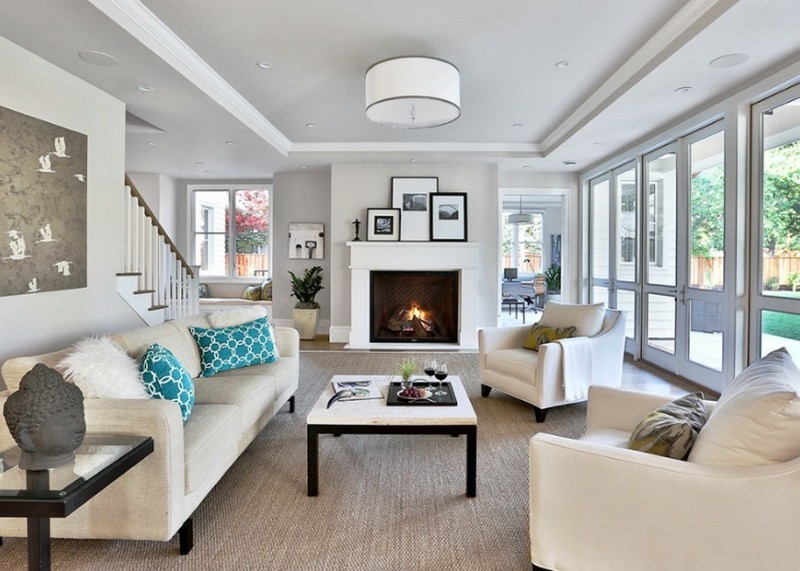
Transitional Design: Everything You Need to Know About This Traditional and Modern Style
Combining the best of both classic and current interiors, the aesthetic is timeless and chic
Dozens of interior design styles exist, with new ones constantly emerging. Transitional design offers a break from more rigid decor styles. It mixes traditional and modern design to create a space that feels both classic and current. Transitional design can be seen as a refreshing option among various design styles. To gain a better understanding of this style, I spoke to a New York–based interior designer about the history and design elements of transitional interiors, as well as how to incorporate this timeless look into your own home.
What is transitional design?
Transitional design generally combines modern style with traditional design. Transitional spaces are characterized by a tonal, textural, monochromatic, and minimal aesthetic. Homes with this look often feature comfortable, streamlined furniture, neutral color palettes with the option for pops of color, and ornate accents. For instance, in a transitional home, you may find more linear furniture combined with a few pieces featuring softer curves, such as a circular ottoman. Some of the more detailed elements of traditional decor are present, for example, through an accent light fixture, although they are more simplified compared to a classic traditional home.
It is important to note that designers may interpret the look differently—some may lean more towards traditional elements, while others may embrace a more modern approach—although the overall aesthetic could still be described as transitional regardless of the direction chosen.
While traditional design might feel stuffy or outdated at times, and modern design might seem too sleek and streamlined, transitional design incorporates elements from both aesthetics, creating a timeless and contemporary feel while allowing for a high level of personal expression. Transitional design is essentially a blend of both contemporary and traditional design to achieve a fresh, timeless look.
Brands like Four Hands and Essentials For Living embody this design style with their unique combination of modern and traditional elements throughout their furniture collections. Materials such as metal, wood, linen, leather, and even concrete are combined and contrasted to create exciting new designs that nod to the past while feeling fresh and contemporary. In 2019, the transitional interior design style was popular in 18% of American homes, surpassing Rustic and Traditional decor styles by a considerable margin. Designers are seeing an increase in clients who want to break conventions and combine historic aspects, such as wainscoting or antique furniture, with modern, clean-lined hardware and accents.
The transitional design style, sometimes defined as “classic with a modern twist”, gained popularity in the 1950s as a response to the harsh modern and mid-century modern designs of the previous era, and its popularity has continued in recent years.
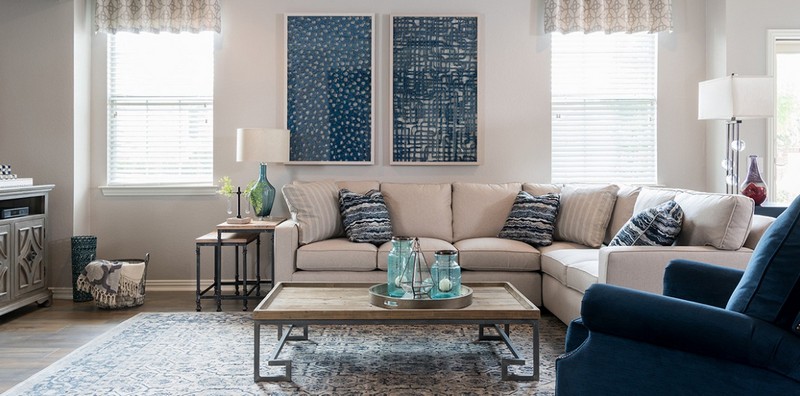
Transitional Style Architecture in the Home
The architecture of a transitional home can vary, from a modern farmhouse with wide plank pine floors and a reclaimed brick fireplace with an old-fashioned cast iron pot rack to a contemporary craftsman-style house with clean lines and natural material accents.
What does transitional mean in design?
While transitional spaces are often seen as a combination of traditional and modern design, the term can also represent interiors that blend multiple aesthetics. Transitional decor can integrate with other styles, silhouettes, and shapes. Instead of adhering to a specific set of “rules” from a single design aesthetic, transitional style allows for experimentation with multiple looks. “Transitional design serves as a foundation aesthetic that allows for growth and change, without committing to one singular point of view,” explains the New York–based interior designer. For instance, elements of minimalism or midcentury design might be present, and their inclusion wouldn’t detract from the transitional description. According to the designer, “transitional design has its roots in a traditional aesthetic, but the silhouettes are a little fresher, more updated, and less fussy—featuring cleaner lines and softer palettes.”
What separates transitional design from contemporary design?
Transitional and contemporary design may seem alike, but they are actually distinct in terms of their design aesthetics. Contemporary design reflects a specific moment in time, while transitional design embodies a timeless space and place. Typically, transitional design blends modern and traditional styles, whereas contemporary homes incorporate various popular styles in an ever-changing manner. From the 1970s onward, contemporary design has steadily evolved as a very current and trendy style. A Dallas-based interior designer mentioned, “Contemporary design borrows from many different styles and combines them all together.”
In general, contemporary interiors encompass any popular style of the current era, while transitional interior design has always been seen as a fusion of traditional and modern aesthetics. Transitional interiors are generally warmer, more layered, and softer than true contemporary interiors. While a contemporary space might utilize cooler toned metals and palettes, transitional spaces may feature a warmer greige palette, unlacquered brass, and nubby neutrals.
Transition design’s history
The history of transitional style is somewhat unclear due to its combination of multiple styles. Traditional design dates back to the 1700s and 1800s with roots in Europe. As the name suggests, this look incorporates more traditional elements such as chandeliers, crown molding, floral arrangements, and ornate rugs. It is rare to find items like neon signs or Pop art in homes with this style. In the mid-20th century, a new interior design trend emerged, embracing a more minimalist style in reaction to the embellishments of traditional looks. As a result, transitional style began to emerge as a blend of these two distinct looks. Transitional style can be viewed as a best-of-both-worlds scenario, and its spaces typically feature clean lines, a neutral color palette, and minimal ornamentation.
Defining elements and characteristics of transitional design
To better understand transitional design, it’s useful to be familiar with the elements that comprise this popular home decor style. Transitional spaces often incorporate texture, tone-on-tone neutrals, and clean-lined upholstery.
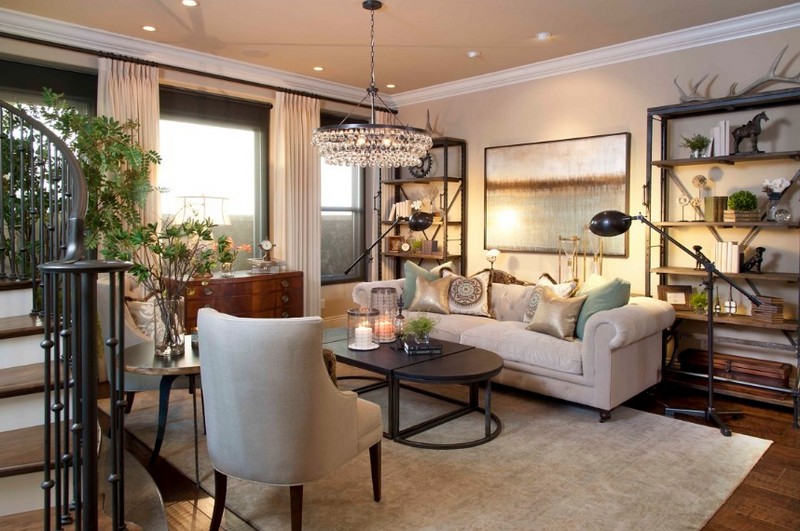
What are the components of transitional design?
While not exhaustive, the following components are frequently found in transitional room design:
– Neutral color palettes consisting mainly of whites, creams, tans, and grays
– Accents of color through rugs, pillows, or artwork
– Natural textures with an emphasis on layering
– Striking lighting fixtures
– Metallic embellishments
– Comfortable, functional furniture that combines curved and straight lines
Transitional spaces are typically defined by recurring elements of color, texture, and shape. The overall feel of the space is cohesive, even if details draw from different styles, trends, or patterns.
Examples of transitional design
For transitional design inspiration, consider the following projects from Feldman and Okin.
Transitional kitchen
Transitional kitchens often feature sleek and streamlined cabinetry, neutral color schemes, and an uncluttered ambiance. Pendant lighting is also common, as are modern finishes.
Transitional dining room
Similar to kitchens, transitional dining rooms emphasize clean lines, and texture is often introduced through chair upholstery or table linens.
Transitional living room
Warm color palettes and coarse textiles, like rattan or textured rugs, are typical in transitional living rooms.
Transitional bedroom
Consider pairing modern furniture with traditional decor in the bedroom, such as a chandelier or lamp.
How to incorporate transitional design into your home
If this mixed design style appeals to you, we have top-tier design tips to help you infuse your home with transitional flair. A great way to start a transitional space is to envision a strip of paint in a paint book. Although the colors may differ, they seamlessly transition into each other to form a cohesive look and feel.
To put this into practice, we recommend selecting three objects or furniture pieces that you adore and identifying common connections. For instance, you might have a modern sectional that shares the same color as a traditional lamp. Perhaps the lamp has another element that complements the throw pillows, which also coordinate with the couch. As you layer elements in the space, keep these connections in mind and ensure that anything you add fits into that trifecta, then expand from there. We suggest introducing more neutral textiles into the space while embracing layers of tone-on-tone. Additionally, consider incorporating pops of unlacquered brass, greige, and clean-lined furniture as effective elements when crafting a transitional look.
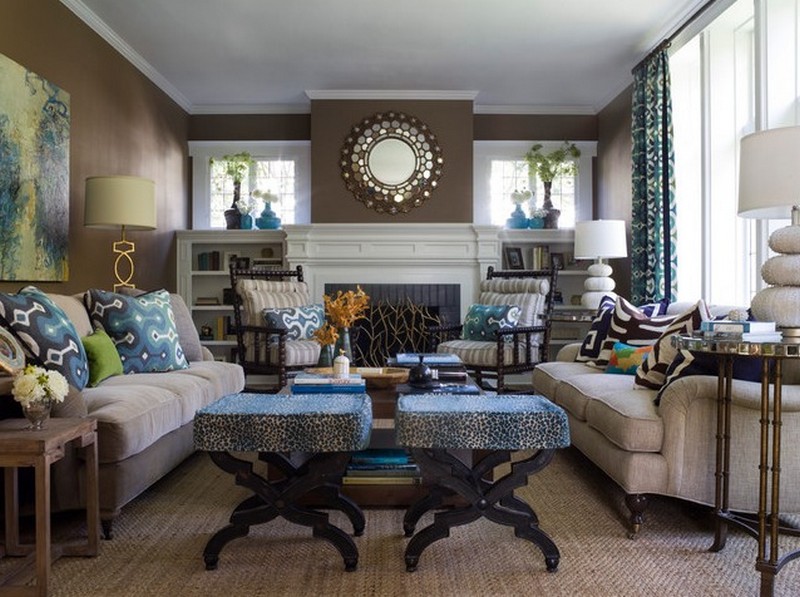
Tips for transitional interior design:
Ensure each room in your home contains a unique and authentic piece of furniture, such as an antique or designer item, to add weight and significance.
Incorporate light decorative accents, such as children’s art or modern pieces with vibrant colors, to introduce a sense of airiness to each space.
Opt for comfortable furniture, like a deep sofa or cozy chair, in every room to accommodate a modern family.
Select neutral or muted color schemes to create a modern, clean ambiance that complements the traditional items you’ve chosen.
Include at least one standout, possibly expensive, piece in every space to elevate the overall look, with lighting being a great investment for enhancing the room’s aesthetic.
Strive to achieve a curated, well-balanced effect in each area by adjusting and harmonizing the chosen elements, rather than allowing them to appear cluttered or chaotic as you move through your transitional home.
Other key characteristics of transitional design style:
A subdued color palette dominated by neutrals, with darker shades reserved for accent pieces.
Transitional design is focused on being timely, reflecting the transitional nature of the times in both its timelessness and its ability to embrace trends.
This style achieves a balance between minimalism and decorative elements, showcasing personality and character without an excessive amount of ornamentation.
Incorporates elements from both modernism and traditionalism, evident in the architectural details of buildings, furniture, and other objects.
Emphasizes comfort, with furniture such as sofas and beds being opulent and a focus on soft, rounded edges and soothing colors in the decorating scheme.
Incorporates textiles with large-scale patterns that complement the room without overwhelming it.
Combines metals and glass with natural materials to achieve balance, bridging the gap between old-world charm and contemporary flair.
Features clean lines, symmetry, and glossy finishes characteristic of traditional design.
Aging gracefully is another hallmark of transitional design, allowing it to withstand trends and maintain its classic yet modern appeal.
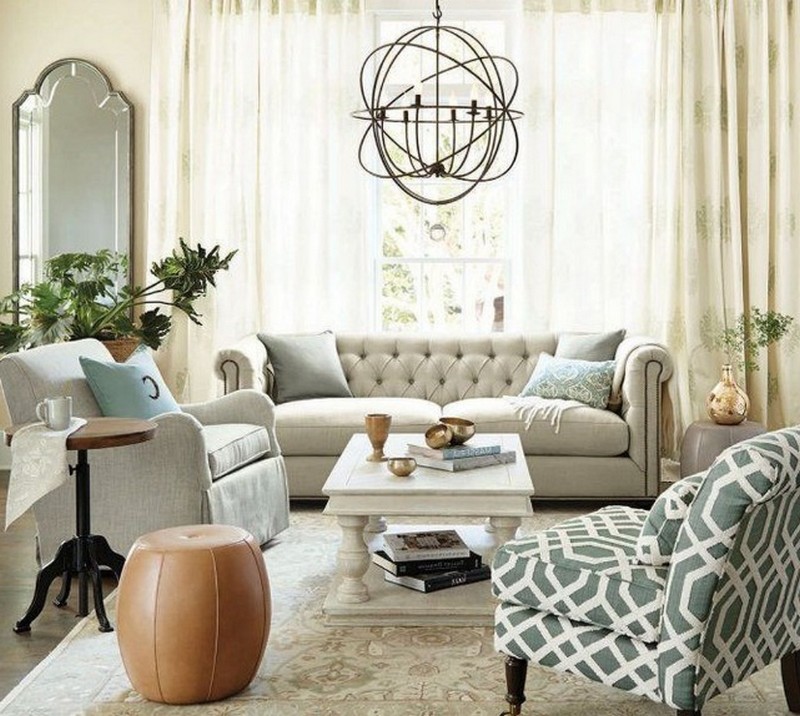
Key differences between traditional and transitional design:
Wood
Transitional style uses a variety of wood tones within the same space, often incorporating detailed millwork without allowing it to dominate the overall aesthetic.
The transitional style tones down detailed, ornate elements often found in traditional design, contrasting them with modern lines for a complementary look.
Materials
The transitional style incorporates a mix of materials to create depth, using wood tones and subtle geometric designs to achieve a warm and inviting, yet contemporary, atmosphere.
Traditional design also creates a warm and inviting atmosphere, but it often features more ornate and diverse colors and patterns, evoking a sense of opulence.
Colors
Transitional interior design maintains a neutral background while incorporating color, often repeating strong tones for consistency and a cohesive modern feel.
In traditional interior design, patterns and colors are often mixed, with one being more daring and the other more reserved, and symmetry playing a crucial role.
Trends
While rooted in tradition, transitional design frequently integrates contemporary interior design concepts, making it easy to embrace other interior décor trends such as modern lighting fixtures or artwork.
Traditional design relies on old or opulent furniture and fittings to establish a sense of timelessness and tradition.
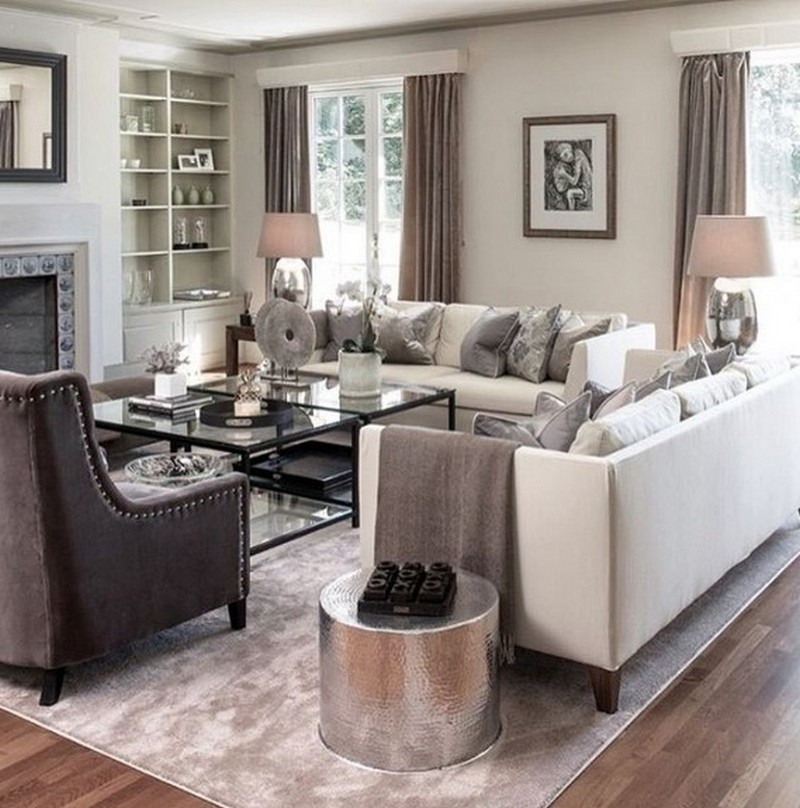
Differences in the kitchen
Transitional kitchens often feature modern decor, such as contemporary photography, modern wall art, or mirrors, whereas traditional kitchens may incorporate a mix of ornate wall decor.
In a traditional kitchen, you’ll find traditionally crafted woodwork and classic paintings.
Tone
Traditional environments often have powerful and saturated tones and colors, while transitional settings are primarily neutral with delicate pastel accents.
Transitional settings also convey a light and airy feel, whereas traditional settings exude a warm and weighty atmosphere.
How to achieve the Transitional look – room by room
Dining Room
In the dining room, you can use a modern dining table and chairs but upholster the chairs in a traditional fabric.
On the other hand, you can place modern cube side tables and sleek metal lamps to complement a traditional headboard.
Bedroom
In the bedroom, you can upholster a classic feature like a curved headboard with a more contemporary material like steel-gray fabric.
Alternatively, you can incorporate modern cube side tables and sleek metal lamps to complement a classic, traditional headboard.
Kitchen
If you prefer not to change your kitchen cabinets because they are already conventional, consider introducing a stronger design throughout the rest of the kitchen with modern accents and updated colors.
You might also want to think about adding modern pendant lighting above your kitchen island or replacing it with a more contemporary piece.
Steel or concrete countertops can also give a more traditional kitchen a contemporary look.
Bathroom
For a contemporary design, incorporate glass, metal, ceramic, and wood into the bathroom.
If you have a traditional clawfoot tub, you can use contemporary floor tiles or arrange classic tiles in a chevron pattern to achieve an updated contemporary look.
Living Room
Keep the fabric warm yet neutral in tone and use clean-lined chairs and sofas to complement historic architectural elements like trims and moldings. In a living room, you can mix and match traditional and modern elements to create a cool yet cozy atmosphere that you’ll love to spend time in.
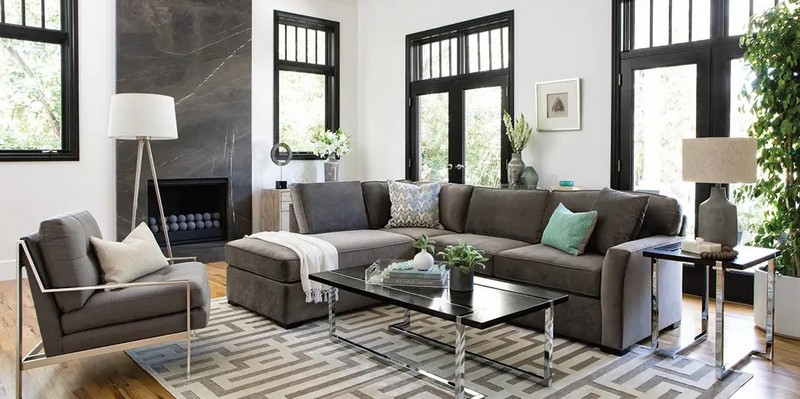
Conclusion
We hope you now have a better grasp of the differences between traditional and transitional designs. Ultimately, choosing between classic and transitional styles is a personal decision based on your lifestyle and desired aesthetic. If you prefer classic and old-style elements with a restrained charm, traditional interior design may be the best choice for you.
If you want to incorporate other interior design trends into a traditional area of your home, you can blend modern furniture and fixtures, as transitional design is all about a creative mix of styles and personal expression.
When it comes to interior design styles, remember that there are no strict rules, and we’re always here to help you with your next home decor transformation.

